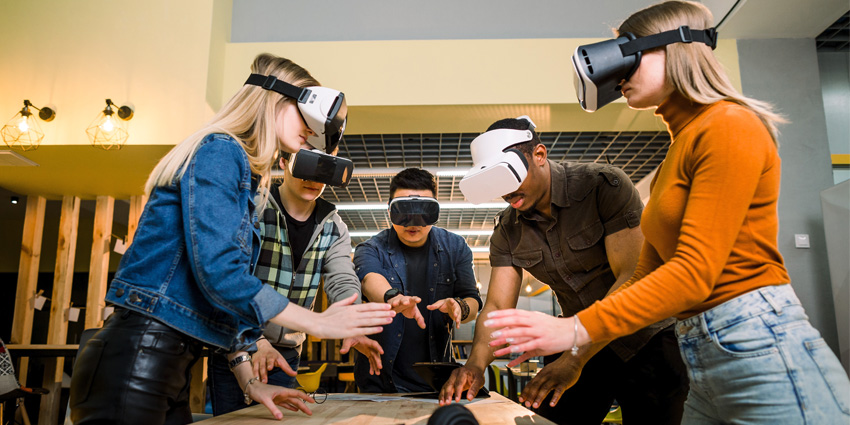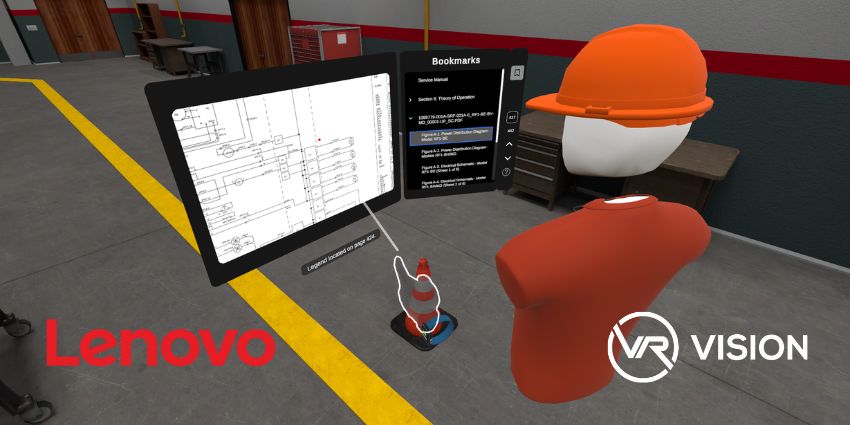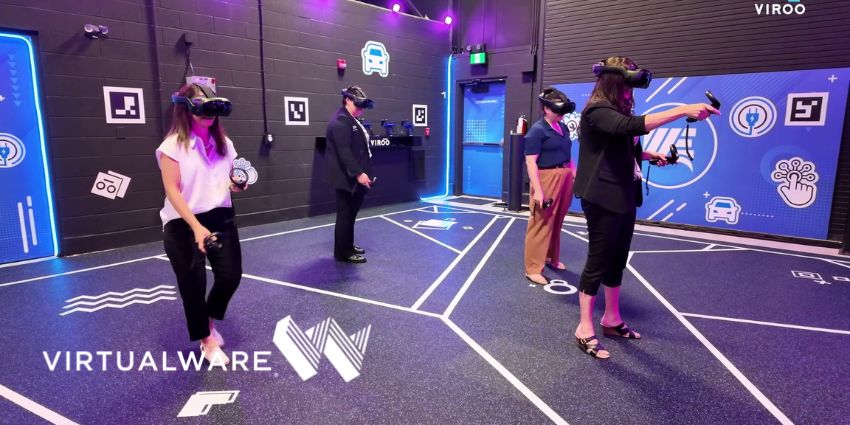Today, more people than ever before are working from home via technologies like Zoom and Microsoft Teams – but will these tools be enough pushing forward?
While video collaboration has done an excellent job of helping businesses survive the pandemic, things like Zoom fatigue and the absence of real-life human-to-human contact strongly suggest it may not be a viable solution for the long-term.
Add to this a recent study from HTC Vive, which found that 74% of office workers today are concerned about the risks of returning to work after the pandemic, while 36% expressed exhaustion after being faced with hours of video calls.
Perhaps this is one of the main reasons why Markets and Markets recently forecasted the virtual reality market, valued at USD 6.1 billion in 2020, is expected to hit USD 20.9 billion by 2025 – but what factors will drive this growth in the enterprise?
To answer that question, let’s look at some of the main reasons why businesses are embracing VR collaboration in 2021 and beyond.
Digitalising Real-Life Connections
Despite the many advantages video collaboration offers to the enterprise, one thing it’ll never be able to replace entirely is the look and feel of a real-life conversation. When complex human interactions get reduced to a grid of 2D video streams on a computer screen, it’s easy for users to become disengaged and distracted during meetings and calls.
With VR, however, users can experience accurate simulations of real-life work environments and interactions without ever leaving their homes. Whether it’s shaking a person’s hand at the start of a meeting or observing their body language during a presentation, VR makes the experience look and feel more natural than anything we’ve seen on any video collaboration platform to date.
This immersive “virtual presence” is a key differentiator that is already changing the world of business communications across various industries. Rather than merely helping organizations survive during the pandemic until it’s safe to go back to the traditional office space, VR collaboration delivers a sustainable solution that allows organizations to work-from-home permanently.
A More Creative World
Aside from simulating real-life human interactions more accurately, VR also allows businesses to explore new ideas and collaborate in ways that were once considered impossible. Industrial designers and engineers, for example, can now use 3D visualization features within VR collaboration platforms to build models and create prototypes in a fraction of the time and cost it would take them to do the same thing in the real-world.
As well as speeding up production rates and drastically cutting back on cost, VR also simplifies the collaboration process, meaning multiple people can work together on the same project in a “same-room” environment from all corners of the world. Reductions in both time and cost when building virtual instead of physical models also give creatives the freedom to test new ideas they never would have tried before, creating new innovations that can set the business apart from the competition.
So far, we’ve already seen VR collaboration make a significant impact on the world of big business – specifically in the AEC, automotive, energy, and healthcare. Still, we’re only standing at the foot of a tidal wave of technological innovation that’s growing bigger every day.
Modern Tech For An Evolving Workforce
Technology isn’t the only thing that’s evolving. Every day employees are getting smarter, and they demand tools that allow them to collaborate in whichever way they feel is most natural and productive.
In that same HTC Vive study, 58% of employees stated they were open to integrating new technology into the workplace – and virtual reality solutions offer a new, more exciting way for workers to communicate with peers and customers alike. As well as being able to communicate more naturally with co-workers, VR collaboration can also enhance training and ensures employees remain engaged throughout their working day, irrespective of time and location.
The Future of Work is Virtual
With market forecasts and businesses trends all agreeing that virtual reality collaboration will be the standard for working life in the future, it’s safe to assume the technology is here to stay.
As well as gaining all of the advantages listed above, getting ahead of the curve now by embracing VR collaboration today is a wise strategy for any business leader looking to strengthen their position a few years down the line.
For more virtual reality news, be sure to keep your eye on XR Today as we’ll be covering VR Collaboration in full for the rest of the month.







